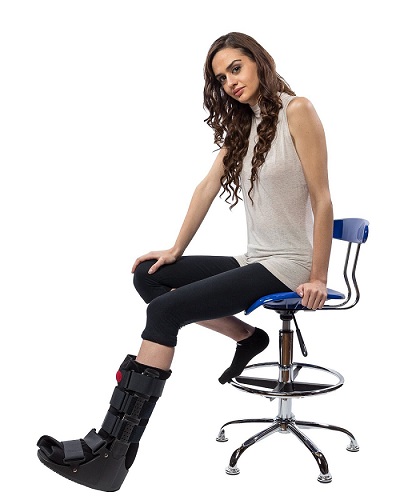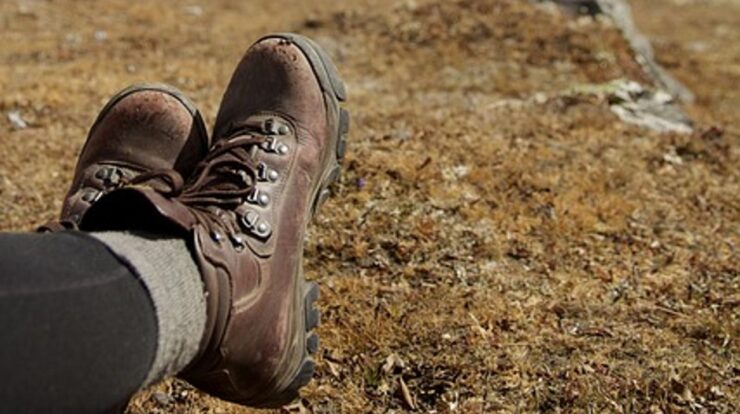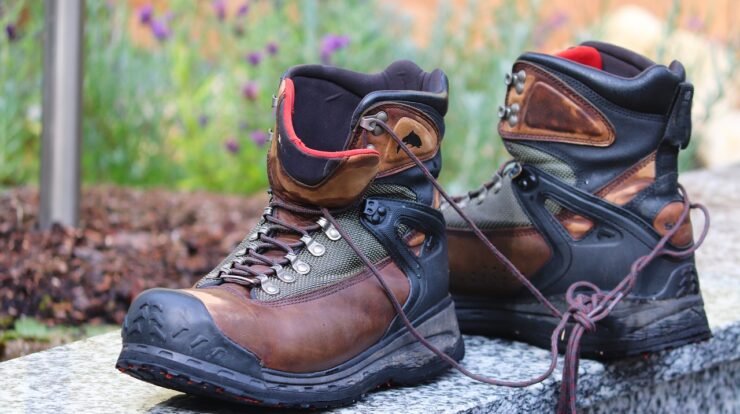
Seeing many regular folks and athletes on the streets wearing boot walkers with crutches I pondered the question; can you walk on a broken foot with a boot walker?
I did some extensive research on this topic “can you walk on a broken foot with a boot walker?” by perusing orthopaedic websites and the national health services websites.
As a result of my indebt research on the questions “can you walk on a broken foot with a boot” I realised that the answer will not be a simple one because it depends.
It depends on the severity of the broken foot and where on the foot is broken.
The cast is normally made of tough plastic or polycarbonate material that restrict the movement of the ankle ensuring that the foot gets a chance to heal properly.
If the bone moves while in the healing process it will slow down the healing process because you would be in effect rebreaking the soft bone that forms as part of the healing process. See the article how do bones heal.
Can you walk on a broken foot with a boot walker? The transition, going from cast to walking boot
The simple answer to this question is, it depends. It depends on the severity of the ankle or foot injury and whether or not the ortho doctor declared your injured foot to be weight bearing or none weight bearing.
Weight-bearing means that you are allowed, by your ortho doctor, to put a certain amount of your body weight on the injured foot while you walk. You can be one hundred percent weight bearing, fifty percent weight bearing, twenty-five percent weight bearing and so on.
One hundred percent weight bearing means that you can place your full body weight on the leg, as long as you can bear the pressure and it is not too uncomfortable.
You will definitely feel a bit of discomfort when you start walking on the broken leg. When you are one hundred percent weight bearing you may wear the boot walker for the added protection to prevent any form of reinjury.
You know when you have an injured foot it seems like every then may cause injury is attracted to it, for example, you sit with your foot tucked in under the table or in front of you and someone walked by and kick it, accidentally of course. You know what I mean.
When you are weight bearing the doctor will advise you on how to walk on your foot, as long as you can bear the discomfort caused by placing pressure on the leg. He or she will advice on how to walk with crutch or walking stick in the most effective way.
So, if the ortho doctor gave you permission to put weight on your foot you are weight bearing. When you are weight bearing you will be instructed on how you can walk on the foot with or without the crutches.
When you are none weight bearing you cannot put any of your body weight on the leg. In this case you will be instructed on how to move around with putting any form of pressure on the broken leg. You will have to learn the art of waking with crutches without placing your injured foot on the ground.
As part of your learning process, if you are none weight bearing, you may have to use two crutches to assist you as you gait. If you use one crutch or cane then you are weight bearing.
If you are weight bearing and have to wear a walking boot then here are some basic tips for wearing a walking boot that you must know.
Going from cast to walking boot
Remember when you were much younger and it was cool to get a broken arm or leg because of all the attention that you would get. All your friends would sign and draw picture on it. You were the coolest guy or gal in school, everyone knew your name.
The problem with the cast was that it gets itchy over time and all you seem to want to do is to put wires or long sticks between the cast and your leg to relieve that itch.
With the traditional cast, you cannot do much of the fun thing that you like, because the cast is so restricted. It even prevents you from doing basic things like showering properly for example.
Unless you get a plastic bag to put your leg in and then be one hundred percent careful not to get water on the cast or else it will deteriorate as fast as flash or superman can transform.
Now with the walking boot, you do not need to anything to stop the itch because you can remove the boot and relieve any itch. You may give your foot some sun light to prevent your skin from stripping off.
You can also remove the boot walker to have a shower without worrying about getting the boot wet. The boot itself can be washed to ensure it is always smelling fresh.
Do you ever have to worry about the question, can you walk on a broken foot with a boot walker?
We all live more active lives not and therefore the chance of succumbing to an injury is much greater. Whenever the injury sustained on the lower ankle is severe you may spend several weeks in a traditional cast before going from cast to walking boot.
In some instances, you may have to wear the traditional cast for two or more weeks before transitioning to a walking boot. You may then have to wear the walking boot but use the crutches to remove pressure from the foot them maybe after a few more weeks you may start transitioning out of the walking boot to start walking unsupported.
Walking on a broken ankle too soon
The doctor will tell you when it is time for you to walk on the broken ankle in the boot. If you put pressure on the ankle too soon it may reinjure the leg.
Walking on broken foot after 4 weeks
It is ok to work on the broken foot after four weeks. A friend of mine broke her fibula, the bone above the ankle, and the doctor put her in a boot walker straight away and said that she should wear the boot for 6 weeks.
The doctor told her that is was ok to walk on the foot if she felt like she can walk on the foot. She decided to walk on the broken foot after 4 weeks because at that time she could bear the discomfort. Everyone recovery time is different and you may be able to bear weight sooner or later.
How long do you have to wear a boot for a broken foot?
It is difficult to say how long you have to wear a boot for a broken foot but in most cases, you will be out of action for six to eight weeks.
During this time, you may or may not be able to wear a boot and be able to walk in that boot for a number of weeks.
It all depends on your body and the rate of healing. The faster your bone heals the sooner you will be able to walk on your broken foot with a boot. If you have to use a crutch then you can read my article on life with a crutch.
Final thought on the question, can you walk on a broken foot with a boot walker?
The simple answer is, it is possible to walk on a broken foot with a boot walker. However, you have to always follow your doctor’s advice. He or she will tell you when, how and where to wear your walking boot.
Follow only your doctor because every person’s case is different. The doctor is the person that gets paid, have all the certificate on the wall, and is licensed to give you advice, so use their advice.
Hope the answer to the questions ‘Can you walk on a broken foot with a boot?’ was sufficient. Please share your story below in the comment section. The person with the best comment may win a prize.






